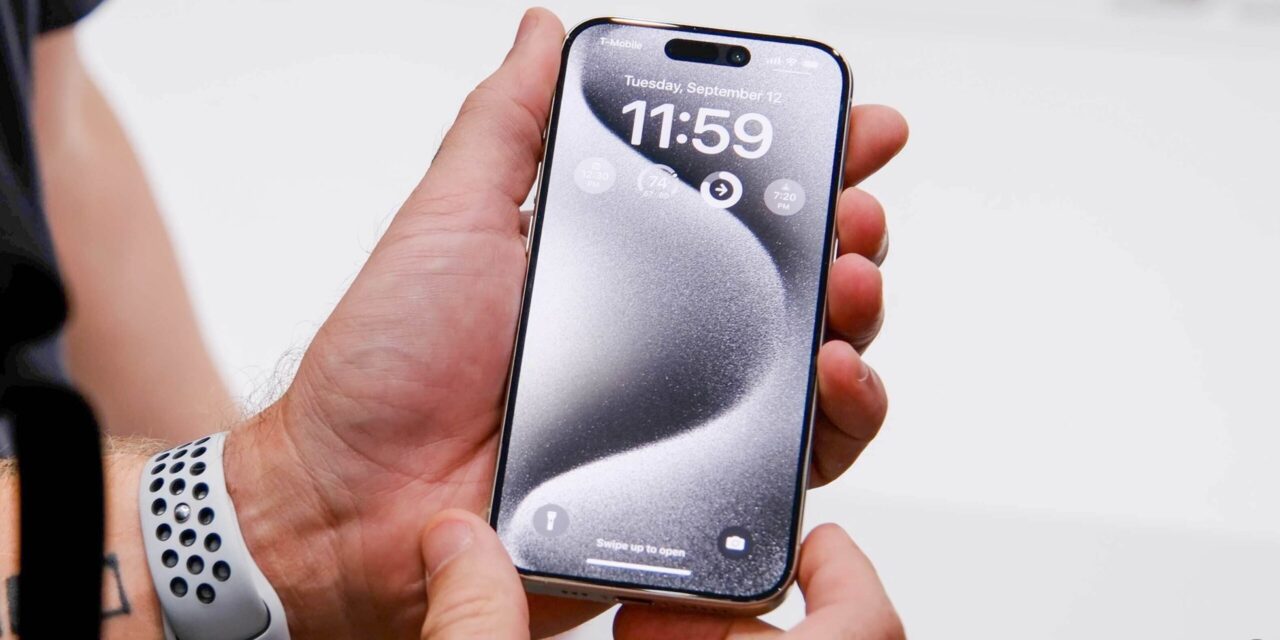As you may have expected, the overall design of the phone hasn’t changed all that much. It still has that glossy glass back, its straight metal edges, and two to three cameras in the rear, depending on the model. However, the phone itself is a bit thicker than the previous generation. The increased thickness has made it so the cameras don’t protrude nearly as much, but unfortunately, that little change also means that you won’t be able to use the phone case you used for the iPhone 13.
Switching over to the front side of the device, Apple has finally gotten rid of the infamous notch, at least kind of. The notch is disappearing from the Pro and Pro Max, giving the phones a pill-shaped cutout for the selfie camera and Face ID sensors. However, the base model and the Plus are keeping said notch. Additionally, the new Plus model will have a 6.7-inch display, meaning the base model and Plus will mimic the size differences between the Pro and Pro Max.
To get a little more in-depth about the cameras, the base model iPhone 14 is sticking with a dual camera setup that offers 12 MP shooters. With those camera sensors, Apple has improved low light performance using a feature it calls Photonic Engine. While the Pro and Pro Max will get the usual three-camera setup, giving the phones a wide, ultrawide, and telephoto lens like last year. Although all of this sounds very familiar, there is one notable difference — a 48 MP main camera.
Moving on to the included features, the iPhone 14 Pro and Pro Max are powered by Apple’s A16 Bionic chip. As for the base model and the Plus, these two handsets are instead using the A15 Bionic found in the iPhone 13. Why Apple isn’t using the A16 chip in all of its models, the company didn’t explain, but it could have something to do with the current global chip shortage.
Another area that won’t be changing much from the last generation is the displays. The two cheaper models are getting a 60Hz display, while the two more expensive models are getting a 120Hz refresh rate. Each phone is still using an OLED screen and features the same resolutions as last year. However, the Pro and Pro Max have a brightness of 2000 nits, which is twice as bright as the iPhone 13.
Other notable specs include 1TB of possible storage for the Pro and Pro Max, Face ID biometrics, Dolby Vision for the Pro and Pro Max, MagSafe charging and accessories, action mode (video stabilization), wireless charging, 5G support, crash detection, SOS via satellite, and always-on display functionality.
If you’re planning on getting an iPhone 14 for yourself, the base model and Plus will be available in five colors which include Midnight, Starlight, blue, PRODUCT(red), and white. The colors for the Pro and Pro Max are Space Black, gold, silver, and Deep Purple. You can preorder the iPhone 14, iPhone 14 Pro, and iPhone 14 Pro Max starting on September 9 or wait for them to hit store shelves on September 16. For the iPhone 14 Plus, you can pre-order today, but you’ll have to wait until October 7 to actually get it.
This content was originally published here.






Recent Comments